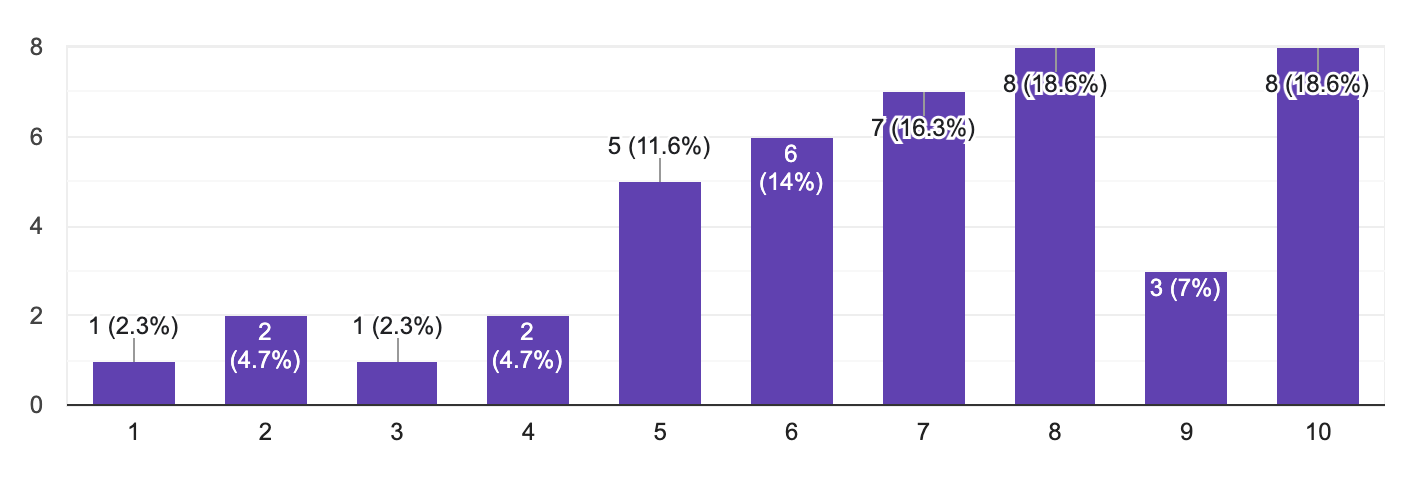To gather information about potential stakeholders in our project, the team has conducted a series of interviews and surveys to both homeowners and representatives from companies who work in the energy industry.
During the first stages of problem discovery, four interviews conducted with Ty Newell, Andy Doble, Ben Paulis, and Chelsea Till provided our team with interesting insights into problems with existing energy systems from the perspective of people concerned with energy consumption and efficiency.
Build Equinox (Ty Newell)
Ty Newell’s company, Build Equinox, specializes in a smart version of the traditional ERV (Energy Recovery Ventilator), which pretreats outdoor ventilation air before it enters a building. This smart version is called the CERV. The discussion introduced our team to the difficulty of incorporating dehumidification into cooling systems due to loss of latent capacity. In other words, the system can no longer handle peak energy loads. Furthermore, the control aspect of the CERV was discussed, including the fact that it measures both indoor and outdoor temperature, as well as relative humidity, in an attempt to prioritize thermal comfort for residents. Newell indicated that their main goal is to improve occupant well-being and comfort, as poor ventilation can cause 10% of brain cognition capability to be lost. He felt that although the CERV tackles this issue, it is still difficult to monitor air and provide comfort conditioning.
Oxygen 8 (Andy Doble)
Andy Doble shared similar sentiments to Newell and validated a problem our team had previously discussed: the difficulty and affordability of retrofitting. He shared that a large focus is placed on integrating such energy recovery systems with existing cooling and/or VRF (Variable Refrigerant Flow – a system which uses refrigerant for both heating and cooling and varies the flow of refrigerant to different units) systems while ensuring code compliance and also convincing consumers of the long-term cost savings despite the larger upfront cost. As a result of the large initial price tag and additional costs associated with retrofitting energy recovery devices into older homes, such as ductwork modifications, and the fact that building codes are starting to require some level of energy recovery, Oxygen 8’s market is mainly commercial in nature.
Lutron (Ben Paulis, Chelsea Till)
Ben Paulis also echoed previous sentiments: for example, it is difficult to get homeowners to justify switching out a $5 light switch for a $45 dimmer, one of Lutron’s main products, and Lutron places an emphasis on quality over price. Paulis also shared plenty of interesting information about retrofitting and about Lutron’s products, telling us that the transition from shades that plug into the wall to battery-powered shades required saving 99% of the power that was being used, a seemingly impossible feat. He was more hesitant, however, to communicate problems that he thinks still exist, though the conversation brought up the topic of what is considered too much control versus too little.
Chelsea Till, a member of the sales team at Lutron, spoke to the emotional aspect of Lutron’s products and the way in which that aligns with a desire for thermal comfort. From her perspective, the primary reason people buy Lutron’s products, more so than for energy savings, is for security and ease. It’s extraordinarily convenient to have the ability to turn all lights in your home on or off merely with the press of a button on a smartphone.
Homeowners
Survey responses from a variety of homeowners living in different parts of the country provided similar insight to these interviews with industry experts, but from the perspective of people with different concerns and priorities. A majority of the survey responses indicated that saving money is top priority, with thermal comfort coming in as a close second. The issue, however, is that most homeowners responded that they don’t plan to live in their current homes for more than 10 years, a short amount of time when it comes to simple payback periods (the time it takes for a system to pay itself off) and energy savings. Some results of the survey are shown below and support the conclusion that homeowners care more about money and their own comfort and don’t think as much about the environment, meaning our team will have to come up with a way to improve the environmental sustainability of space heating without infringing on quality or price.
As seen in Figure 1, the homeowners we polled are more inclined to make changes to their home when there are financial benefits rather than environmental benefits. This is useful information to have when deciding the problem the group wants to tackle.

Figure 1: Bar chart shows responses to the following question in an anonymous poll: “When it comes to making changes to your home, please rank the following priorities.”
As seen in Figure 2, money is more of an inhibitor than time when it comes to people making changes to their home. This means that affordable solutions to our team’s problem area should be a priority.

Figure 2: Bar chart shows responses to the following question in an anonymous poll: “What are your main inhibitors to changes/renovation?”
While money is a large factor when it comes to home renovations and improvements, Figure 3 shows that many people are willing to make changes to their home. This is support that there is demand for energy saving solutions, but they need to be affordable and save homeowners money.

Figure 3: Bar chart shows homeowners’ willingness to renovate their home’s energy systems (10 being the highest).
We also turned to literature and academic research articles to inform our project, including the need for energy storage and the limitations of existing systems:
Per a 2021 NREL (National Renewable Energy Laboratory) report, levels of reported solar photovoltaic (PV solar panels) curtailment are high but emerging technologies may allow for withheld PV output to be used in “capacity reserves and frequency regulation”. In other words, emerging technologies allow us to better distinguish between PV output that is withheld due to grid constraints and output that is withheld for energy storage purposes. As a result, a shift towards curtailment (restrictive) management, rather than minimization, will occur [3]. The same holds true for wind energy. In the past, low energy transmission capacity in Texas caused excess wind generation to be curtailed, but after a recent grid expansion, wind energy curtailment has been reduced due to the increased capacity [2]. However, energy storage would allow for better curtailment management, which is a more efficient solution than constant grid expansion to reduce curtailment.
Thus, there is a clear need for energy storage. Addressing grid issues with energy storage might provide resilience to climate change, along with cost savings due to less need for grid expansion projects. However, per our survey results, homeowners might argue that this doesn’t address their primary concern, comfort. Arguably, the best way to achieve thermal comfort is through conditioning a localized space or having the ability to control the temperature of individual spaces within a building. Smart vents are meant to do just that, allowing or impeding airflow to specific rooms based on set preferences [4]. But still, there are issues: connectivity problems and no compatibility with existing thermostats, therefore requiring the additional cost associated with purchasing a smart thermostat and even potential damage to HVAC systems [1]. So, the same problem remains: how can thermal comfort be achieved at an affordable price, without straining the electric grid?
As our team moved into the problem framing and early stages of solution brainstorming, two more interviews were conducted with Kate Yoder and Craig Updegrove.

Trane Technologies (Kate Yoder): Kate Yoder works at Trane Technologies, an HVAC manufacturing company, and provided our team with lots of useful information which we will use in developing functional requirements for our project. In order to determine an appropriate size for our system/device, our team asked about cabinet sizing conventions, and learned that cabinet sizing is standardized. We can therefore look up standards to constrain our prototype. We also learned that Trane Technologies makes sure that various components of their system are compatible with components from other companies, so that customers have the ability to mix and match. Such compatibility and flexibility is an objective for our prototype, as it will likely result in more consumer interest.
Easton Housing Authority (Craig Updegrove): Craig Updegrove and others from the Easton Housing Authority gave five members of our team a tour of the Bushkill House, a multifamily housing unit in Easton’s West Ward (Easton, Pennsylvania), which utilizes zone valves (valves which regulate fluid flow to a selected ‘zone’ or section) for each apartment. A computer system allows for control of the temperature in each unit. Our team asked questions regarding the payback period associated with high-efficiency equipment, the motivation for reducing energy costs, and zone valve control, in order to determine appropriate and competitive objectives for our control system. One aspect of their system that confused several of our team members was the fact that the thermostats in each unit can only change the temperature by two degrees up or down; for a larger temperature change, homeowners must call the office, so that the office can change it in the computer system.
Sources:
[1] “Does a Smart Vent Really Work?” RGB Construction, https://rgbconstructionservices.com/does-a-smart-vent-really-work/. Accessed 16 Oct. 2022.
[2] Fewer Wind Curtailments and Negative Power Prices Seen in Texas after Major Grid Expansion. https://www.eia.gov/todayinenergy/detail.php?id=16831. Accessed 16 Oct. 2022.
[3] O’Shaughnessy, Eric, et al. Solar PV Curtailment in Changing Grid and Technological Contexts. National Renewable Energy Lab.(NREL), Golden, CO (United States), 2021.
[4] Snead, A. “Smart Vents: The How, The Why And The Best Ones To Buy.” Smarter Home Guide, 4 Mar. 2020, https://smarterhomeguide.com/smart-vents/.


